Northamptonshire Police
Northamptonshire Police (colloquially known as Northants Police) is the territorial police force responsible for policing the county of Northamptonshire in the East Midlands of England, in the United Kingdom.
| Northamptonshire Police | |
|---|---|
| Common name | Northants Police |
| Abbreviation | NPS |
| Agency overview | |
| Formed | 1 April 1966 |
| Preceding agencies |
|
| Employees | 2,236 |
| Volunteers | 45 |
| Annual budget | £121,000,000 (2014) £126,000,000 (2018-19) [1] |
| Jurisdictional structure | |
| Operations jurisdiction | Northamptonshire, UK |
.svg.png) | |
| Map of Northamptonshire Police's jurisdiction. | |
| Size | 2,364 |
| Population | 723,000 |
| Governing body | Home Office |
| General nature | |
| Operational structure | |
| Overviewed by | Her Majesty's Inspectorate of Constabulary and Fire & Rescue Services (HMICFRS) |
| Headquarters | Wootton Hall, Northampton, United Kingdom NN4 0JQ |
| Sworn Officers | 1,616 |
| Unsworn members | 929 |
| Elected officers responsible |
|
| Agency executives |
|
| Parent agency | Office of the Police, Fire and Crime Commissioner |
| Child agencies |
|
| Facilities | |
| Stations | 6 |
| Website | |
| www.northants.police.uk | |
The Northampton Police area includes Brackley, Burton Latimer, Corby, Daventry, Desborough, Higham Ferrers, Irthlingborough, Kettering, Northampton, Oundle, Raunds, Rothwell, Rushden, Towcester, Thrapston and Wellingborough across 914 square miles (2,370 km2) with a resident population of 710,000. It responds to more than one million phone calls a year, with more than 120,000 of these being emergency 999 or 112 calls.
History
Prior to the establishment of uniformed police forces in the United Kingdom, each parish had a Parish Constable – a person appointed locally who had responsibility for enforcing the law within their own village. In villages and towns, a system known as Watch and Ward was employed, where paid Watchmen guarded towns at night.
Northamptonshire Police can trace its earliest roots to 1840 when the Northamptonshire Constabulary and Daventry Constabulary were formed. The establishment of police forces at that time was based upon principles established by Sir Robert Peel, the Home Secretary in 1822 and founder of modern-day policing in most Westminster-based systems of government. Known as the Peelian Principles, they describe a philosophy that define an ethical police force and include:
- Every police officer should be issued an identification number, to assure accountability for his actions.
- Whether the police are effective is not measured on the number of arrests, but on the lack of crime.
- Above all else, an effective authority figure knows trust and accountability are paramount. Hence, Peel's most often quoted principle that "The police are the public and the public are the police”.
Upon creation, Northamptonshire Constabulary initially started with seven superintendents and 35 police constables, who worked in a primitive shift system and were paid 12 shillings a week.
In 1930, Northamptonshire Constabulary rolled-out their first motorised vehicles for law enforcement use. The inventory included two cars and four motorcycles for police officer use. The vehicles were stationed throughout the county, with one car based in Daventry and the other in Kettering. The motorcycles were stationed in Northampton, Wellingborough, Oundle and Towcester.
The Northamptonshire Constabulary merged with the borough police forces within Northamptonshire on 1 April 1966 to form Northampton and County Constabulary with an estimated 442 officers and actual strength of 387.[2]
The Force was renamed the Northamptonshire Police on 1 January 1975.
Northamptonshire Police and Crime Commissioner
The Northamptonshire Police and Crime Commissioner (PCC) is an elected official charged with securing efficient and effective policing within the County. The position replaces the now abolished police authorities. The PCC is elected for four-year terms. The first incumbents were elected on 15 November 2012.
The current PCC is Mr. Stephen Mold who was elected to office on 5 May 2016 to a term expiring in May 2020.
The core functions of the PCC is to secure the maintenance of an efficient and effective police force within Northamptonshire, and to hold the Chief Constable to account for the delivery of the police and crime plan. The PCC is also charged with holding the police fund (from which all policing in the County is financed) and raising the local policing precept from council tax. Lastly, the PCC is responsible for the appointment, suspension and dismissal of the Chief Constable.
Police and Crime Plan
Shortly after their election to office, the PCC is required to produce a Police and Crime Plan. The plan must include their objectives for policing, what resources will be provided to the Chief Constable and how performance will be measured. Both the PCC and the Chief Constable must have regard to the Police and Crime Plan in the exercise of their duties. The PCC is required to produce an annual report to the public on progress in policing. The Police and Crime Plan 2014-2017 is Northamptonshire Police’s foundation document.
Police funding
The PCC is charged with managing the 'police fund', from which all policing is financed. The bulk of funding for the police fund comes from the Home Office in the form of an annual grant (calculated on a proportionate basis by the Home Office to take into account the differences between the 43 forces in England and Wales, which vary significantly in terms of population, geographical size, crime levels and trends), though the PCC has the authority to set a precept on the Council Tax to raise additional funds. The PCC is responsible for setting the budget for the Force, which includes allocating enough money from the overall policing budget to ensure that they can discharge their own functions effectively.
Facilities
Police officers and staff operate from the Police Force Headquarters at Wootton Hall in Northampton as well an additional six smaller stations based in: Corby, Daventry, Kettering, Northampton, Wellingborough and Weston Favell.
There are also two Justice Centres:
- Criminal Justice Centre (Brackmills) - This is a base for police support staff, officers and also has a custody centre.
- Weekley Wood Justice Centre (Kettering) - This is a base for police support staff, officer and also has a custody centre.
- Weekley Wood is also a joint base for administrative staff of the Northamptonshire Fire and Rescue Service.
Organisation
The force is led by the chief constable, and is composed of:
- The chief officers and Force Command Team;
- Crime and Justice Command;
- Force Support Departments;
- East Midlands Police Collaboration; and,
- Multi-Force Shared Services.
Chief officers
Chief officers is a collective term for the chief constable, deputy chief constable and assistant chief constable.
Chief constable
The chief constable is the most senior officer within Northamptonshire Police and holds command of the force. The chief constable is accountable to the police and crime commissioner, who appoints chief constables and may dismiss them.
The current chief constable of Northamptonshire Police is Nick Adderley, who was appointed in August 2018 to a four-year term.
| Image | Chief Constable | Term | Comments |
|---|---|---|---|
| Henry Goddard | 1840-1849 | First Chief Constable | |
| Henry Lambert Bailey[3] | 1849-1875 | ||
| Unknown | 1875-1881 | ||
| James Kellie-MacCallum | 1881-1931 | CBE KPM | |
| Angus Ferguson | 1931-1941 | QPM | |
| Robert Henry Dundas Bolton | 1941-1960 | ||
| John Aidan Hasting Gott | 1960-1972 | ||
| Frederick Arthur Cutting[4] | 1972-1979 | ||
| Maurice Buck 1979 - 1986 | David O'Dowd | 1986-1993 | CBE, OStJ, QPM |
| Sir Edward Crewe | 1993-1996 | ||
| Sir Christopher Fox | 1996-2003 | ||
| Peter Maddison | 2003-2009 | ||
| Adrian Lee | 2009-2015 | ||
| Simon Edens | 2015-2018 | QGM, QPM | |
| Nick Adderley[5] | 2018- |
Deputy Chief Constable
Deputy Chief Constable (DCC) is the second highest rank in Northamptonshire Police. The current Deputy Chief Constable is Simon Nickless. Simon’s policing career began in 1992 in Nottinghamshire, where in 2002 he took first command as a Neighbourhood Inspector. In 2007, Simon took on the role of Operations Superintendent in Nottingham City before becoming the Deputy Commander, with responsibilities including preventing violent extremism, performance and the policing of major events. He was promoted to Chief Superintendent in 2011 and joined Cleveland Police as Assistant Chief Constable in 2014. In 2018 he was seconded to the College of Policing as senior policing advisor. Simon became Deputy Chief Constable at Northamptonshire Police in February 2019.
Assistant Chief Constable
Assistant Chief Constable (ACC) is the third highest rank in Northamptonshire Police. The current Assistant Chief Constable is James Andronov who has responsibility for officer and public relations. He works on improving officer morale and can sometimes be seen patrolling with regular front-line officers. Andronov was a Chief Superintendent with West Midlands Police before his appointment to ACC in May 2017.
Personnel and Ranks
Northamptonshire Police employ around 2207 people;
- Police Officers: 1278 (sworn)
- Police Community Support Officers: 97 (un-sworn)
- Police Staff: 832 (un-sworn)
But are also supported by sworn and un-sworn volunteers;
- Special Constables: 338 (sworn)
- Police Support Volunteers: 14 (un-sworn)
Regular Members
The term regular member, or "Regular", refers to the more than 1220 regular police constables who are trained, attested and paid officers of the Force, and include all the ranks from Constable to Chief Constable. They are responsible for investigating crime, and have the authority to make arrests. Regulars are responsible for general policing duties and serve in a variety of operational and administrative roles within the Force, including: major crime investigations, emergency response, forensic identification, forensic collision reconstruction, bike patrol, explosives disposal and police dog services. Also included are administrative roles including corporate services (finance, HR, etc.), policy analysis, public affairs and professional standards.
In law, every member of a police force is a Constable whatever their actual rank, in the sense that, despite being a low-ranking or high-ranking officer, all have the same powers of arrest. The basic police powers of arrest and search of an ordinary Constable are identical to those of a superintendent or chief constable; however certain higher ranks are given administrative powers to authorise certain police actions. In England and Wales, these include the powers to:
- authorise the continued detention of up to 24 hours of a person arrested for an offence and brought to a police station (granted to sergeants and above at designated police stations),
- authorise section 18 (1) PACE house searches (granted to inspectors and above), or
- extend the length of prisoner detention to 36 hours (granted to Superintendents).
Some authorities are matters of force or national or force policy and not subject to law, such as authorising the use of spike strips, and authorising the use of safe controlled crashes of pursued vehicles, by trained traffic police officers.
In relation to police officers of the Home Office or territorial police forces of England and Wales, section 30 of the Police Act 1996 states that "a member of a police force shall have all the powers and privileges of a Constable throughout England and Wales and the adjacent United Kingdom waters". Police officers do not need to be on duty to exercise their powers and can act off duty if circumstances require it (technically placing themselves back on duty). Officers from the police forces of Scotland and Northern Ireland and non-territorial special police forces have different jurisdictions.
Officers holding ranks up to and including Chief Superintendent who are members of the Criminal Investigation Department (CID) or Special Branch (and certain other units) have the prefix "Detective" before their rank. Due to the nature of their duties, these officers generally wear plain clothes and so do not wear the corresponding rank insignia; however, they still operate within the same structure as their uniformed counterparts.
Regular Member Ranks
Like most of the police forces of the United Kingdom, Northamptonshire Police uses a standardised set of ranks that were chosen by Home Secretary Sir Robert Peel in 1829. The ranks at that time were deliberately chosen so that they did not correspond with military ranking (with the exception of Sergeant), due to fears of a paramilitary force. Northamptonshire Police have a number of Chief Inspectors and Detective Chief Inspectors as well as two Chief Superintendents, CS Mick Stamper and DCS Kate Meynall.
| Great Britain Police Ranks and Insignia | |||||||||
|---|---|---|---|---|---|---|---|---|---|
| Rank | Constable | Sergeant | Inspector | Chief Inspector | Superintendent | Chief Superintendent | Assistant Chief Constable | Deputy Chief Constable | Chief Constable |
| Epaulette Insignia |  |
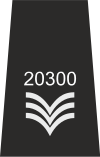 |
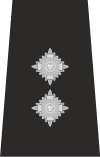 |
 |
 |
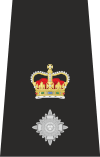 |
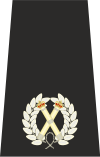 |
 |
 |
| Northamptonshire Police Workforce | ||||||||||||
|---|---|---|---|---|---|---|---|---|---|---|---|---|
| Rank | Police Staff | Police Support Volunteer | Designated Officer | PCSO | Special Constable | Constable | Sergeant | Inspector | Chief Inspector | Superintendent | Chief Superintendent | Chief Officer |
| Female Officers | 0 | 0 | 0 | 41 | 73 | 361 | 52 | 15 | 17 | 4 | 1 | 0 |
| Male Officers | 0 | 0 | 0 | 54 | 212 | 583 | 163 | 41 | 17 | 6 | 4 | 4 |
| Total Officers | 0 | 0 | 0 | 95 | 285 | 944 | 215 | 56 | 34 | 10 | 5 | 4 |
| Reference | 2019 Police workforce open data tables[6] | |||||||||||
Special Constables
Special Constables are volunteer police officers who have exactly the same powers as a regular officer, and (with minor exceptions) wear the same uniform and are issued the same equipment. Special Constables are assigned to Safer Community Teams (SCTs) and work alongside Police Officers and Police Community Support Officers (PCSOs), to tackle crime and anti-social behaviour, and help improve public confidence and satisfaction. In addition, Specials support operations across the Force, carry out plain-clothed patrols, gather intelligence and execute warrants.
Special constable ranks
Since 2000, the National Policing Improvement Agency has encouraged Special Constabularies to return rank structures and insignia to be identical to their regular counterparts. In 2018, Northamptonshire Police aligned the rank insignia of Specials to be that of their regular counterparts.
| Northamptonshire Police Special Constabulary Ranks | |||||
|---|---|---|---|---|---|
| Rank | Special Constable | Special Sergeant | Special Inspector | Special Chief Officer | |
| Epaulette Insignia |  |
 |
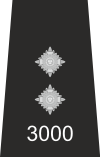 |
 | |
| Note |
| ||||
Emergency Services Cadets
The Northamptonshire Emergency Services Cadets deliver a combined emergency services curriculum allowing young people to develop skills across their emergency services as well as important social and life skills. Cadets are fast becoming an important part of the policing, fire and ambulance family, offering a key link to the younger members of the community. Their cadet scheme is open to all young people who are aged 13–18 and represent their local communities, fully embracing the rich diversity they offer. NESC are a registered charity supported by Northamptonshire Police, Northamptonshire Fire and Rescue and East Midlands Ambulance Service. The programme operates from the following areas:
- Daventry
- Kettering
- Corby
- Northampton
- Towcester and South Northamptonshire
- Wellingborough and East Northamptonshire
NESC support all the emergency services with operational policing and community engagement. The Programme is open to all young people regardless of their career ambitions or capabilities. It is intended that participants in the programme will develop skills and confidence that will be of benefit to communities and employers.
Police Community Support Officers
A Police Community Support Officer (PCSO) is a uniformed civilian member of police support staff. They are non-warranted but are provided a variety of Police powers. PCSO's work within Safer Community Teams composed of PCSO's, regular Officers and Special Constables to undertake high visibility patrolling, tackling anti-social behaviour, dealing with minor offences, gathering criminal intelligence and supporting front-line policing. However, the powers of PCSOs have been statutorily limited to maintain the distinction between them and Police Officers.
Police Community Support Officers do not have a rank system. Their epaulettes simply bear the words "POLICE COMMUNITY SUPPORT OFFICER" and their collar number.
Resources
Vehicles
As of January 2016, Northamptonshire Police use a range of vehicles to perform their duties.[8] Primarily utilizing Vauxhall Astras and BMW X5s for regular patrols and response. They also use motorcycles for various reasons such as off-road pursuits and getting around at crowded public events that may be hosted in fields. For motorcycles, the force use YAMAHA WR250R (primarily off-road) and YAMAHA FJR (on-road). Northants Police also have approximately 12 Ford Focus Estates which are usually used for Police Dog transport.
As of November 2018, the force have seen to be phasing out the Vauxhall Astras and replacing them with Vauxhall Insignias.
Helicopters
Northamptonshire Police do not have their own helicopter as all UK police forces are now supported by the centralized National Police Air Service. Northants Police are usually assisted by the Husbands Bosworth NPAS Base but it is possible for any base to assist.
East Midlands Operational Support Service (EMOpSS)
The EMOpSS is a shared service that works to collaborate and share officers, resources and equipment between three police forces; Northamptonshire Police, Lincolnshire Police and Leicestershire Police. The East Midlands Operational Support Service currently share a Dog Section, a Roads and Armed Policing Team, a Serious Collision Investigation Unit, a Tactical Armed Policing Team, a Tactical Roads Policing Team and a Tactical Support Team.
Tasers
On 19 August 2019, then chief constable Nick Adderley announced that he will be equipping all front line officers with tasers.[9] After a Police Federation of England and Wales poll found that 94% of officers would like to see more officers armed with tasers. Adderley stated that the deployment would take approximately 18 months and cost the force around £220,000[10] but he felt that it was justifiable, given the increase in violent attacks against officers.[11]
Alumni
- "Whispering" Bob Harris OBE, presenter on Radio 2, and former presenter of The Old Grey Whistle Test
See also
- List of police forces in the United Kingdom
- Policing in the United Kingdom
References
- https://assets.publishing.service.gov.uk/government/uploads/system/uploads/attachment_data/file/725767/police-funding-england-and-wales-2015-to-2019-hosb1318.pdf
- The Thin Blue Line, Police Council for Great Britain Staff Side Claim for Undermanning Supplements, 1965
- Clarke, John. Victorian Brackley.
- "'We have much to be proud of' says police chief as Northamptonshire marks 50th anniversary". Northamptonshire Telegraph. Retrieved 20 June 2018.
- https://www.northantspcc.org.uk/nick-adderley-confirmed-as-new-chief-constable-of-northamptonshire-police/. Missing or empty
|title=(help) - "Police workforce open data tables". GOV.UK. July 2020 – January 2020.
- Northamptonshire Police "Special Constable Ranks FOI", December 2018
- "Vehicle Fleet List - a Freedom of Information request to Northamptonshire Police". WhatDoTheyKnow. 13 January 2016. Retrieved 27 November 2018.
- "Northamptonshire Police is the first police force in the country to arm all front-line officers with Tasers | Northamptonshire Police". www.northants.police.uk. Retrieved 23 August 2019.
- "Police force to arm all officers with Tasers". 20 August 2019. Retrieved 23 August 2019.
- EXCLUSIVE, Giles Sheldrick (13 August 2019). "UK crime SHAME: Shock figures reveal 'appalling' attacks on police officers each day". Express.co.uk. Retrieved 23 August 2019.
External links
- Northamptonshire Police
- Northamptonshire Police and Crime Commissioner
- Neenor
- East Midlands Air Support
- Crime Mapping
- ACPO Professional Ethnics